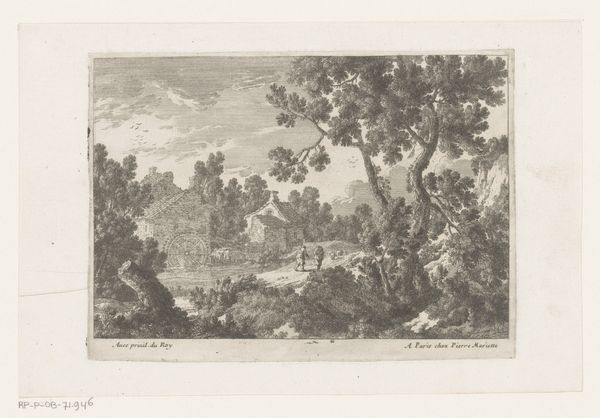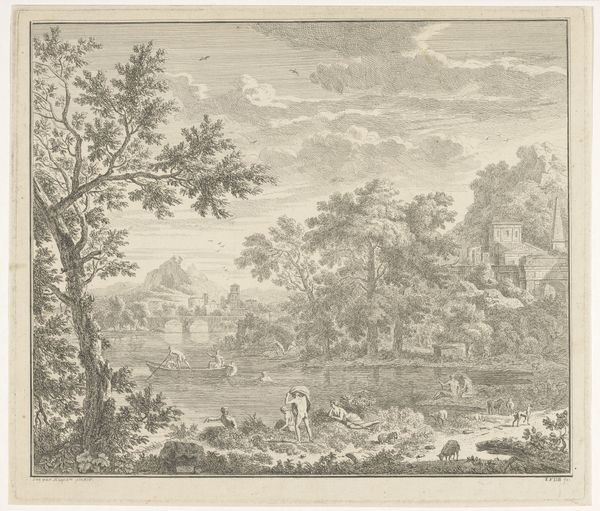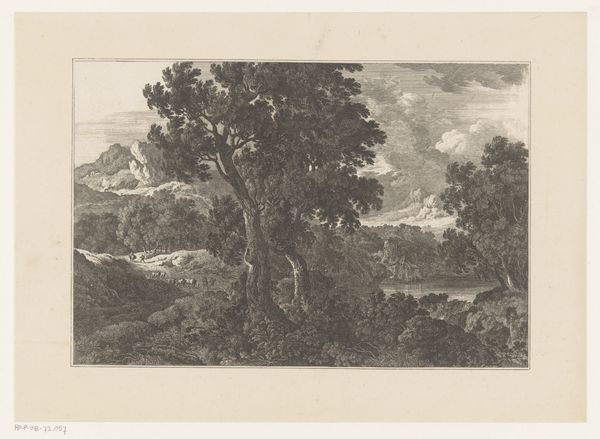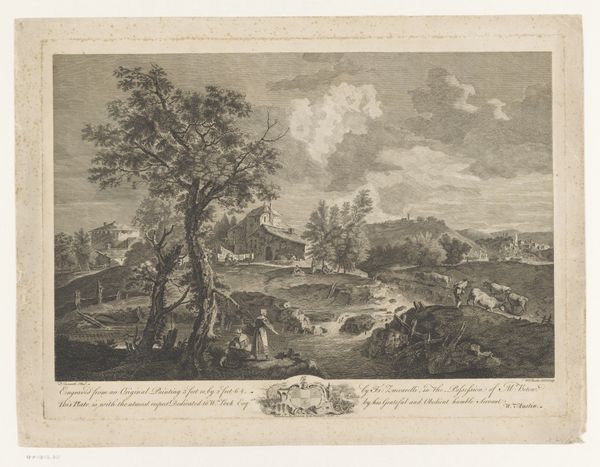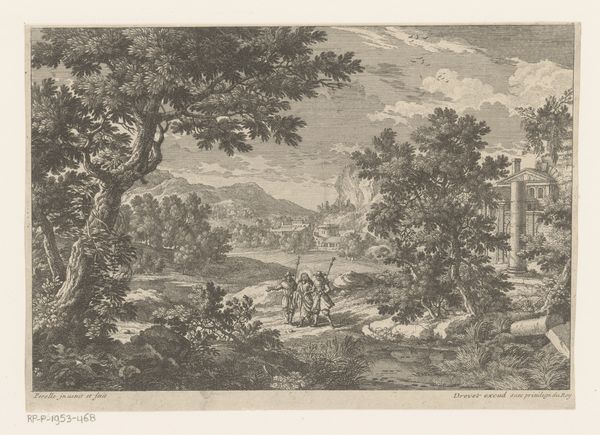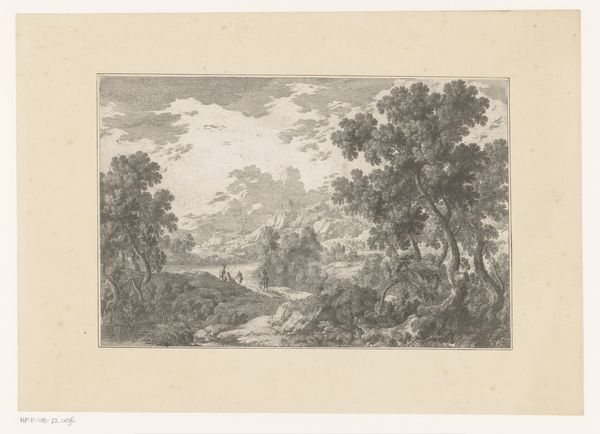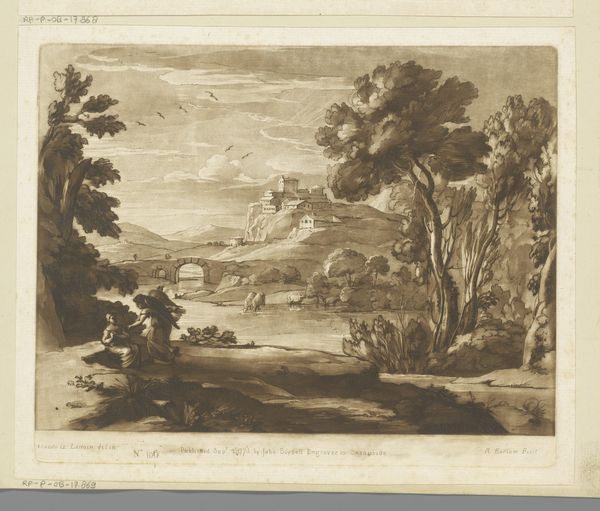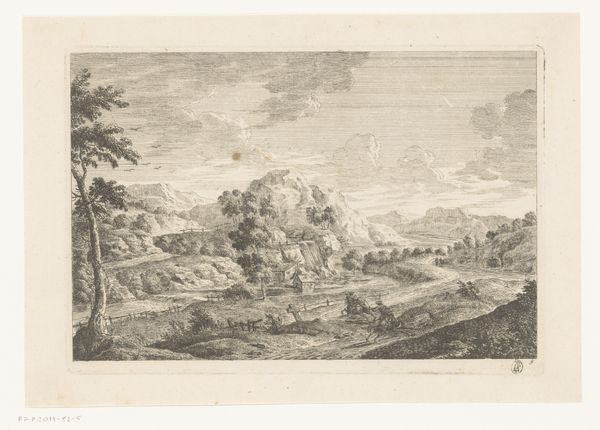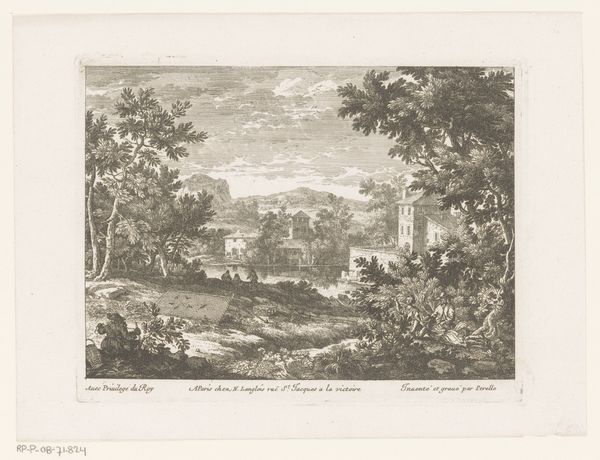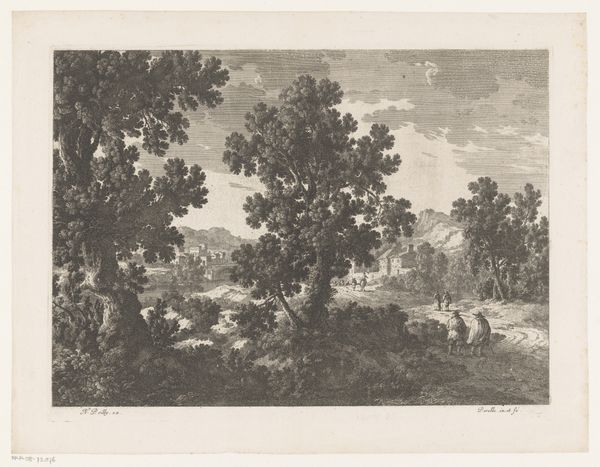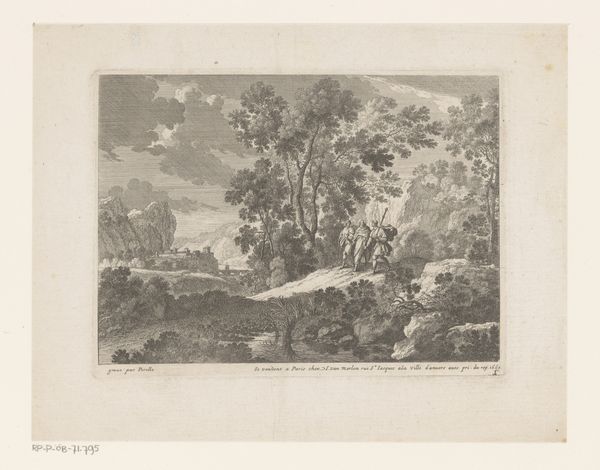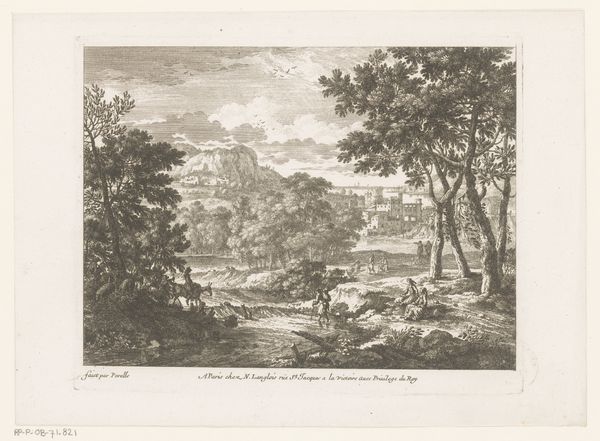
pencil drawn
photo of handprinted image
light pencil work
ink paper printed
pencil sketch
light coloured
old engraving style
pencil drawing
pen-ink sketch
pencil work
Dimensions: height 235 mm, width 330 mm
Copyright: Rijks Museum: Open Domain
Nicolas Perelle created this landscape print, sometime in the 17th century, using the technique of etching. The magic of an etching lies in its linear quality, achieved by drawing into a wax ground on a metal plate. Acid bites away the exposed lines, and then ink is applied and the plate is pressed onto paper. This results in the image you see before you, where the velvety blacks are built up from a dense layering of etched lines. Look closely, and you can see how Perelle varied the pressure of his hand, building up darker tones with denser marks, and creating lighter areas with a more sparse touch. The printmaking process allowed for the wide distribution of images like this one, but it also required a whole workshop of labor: the artist who conceived the image, the skilled etcher, the printer, and the distributor. By understanding the process, we can appreciate not only the artistry, but the broader social and economic context that made it possible.
Comments
No comments
Be the first to comment and join the conversation on the ultimate creative platform.
